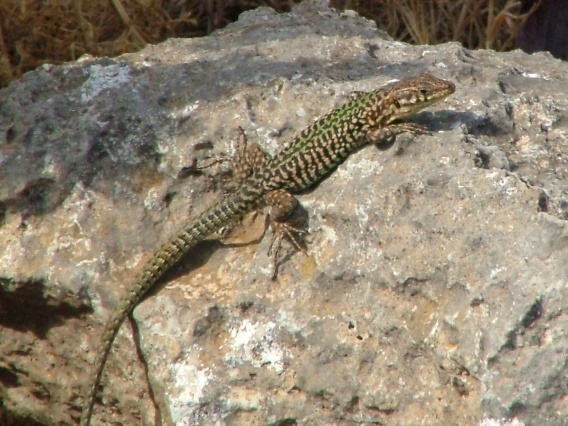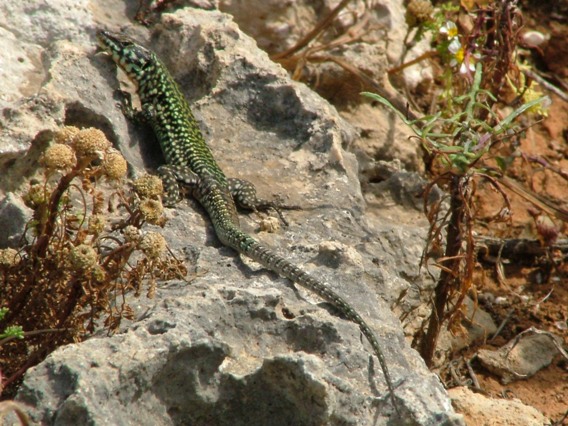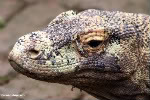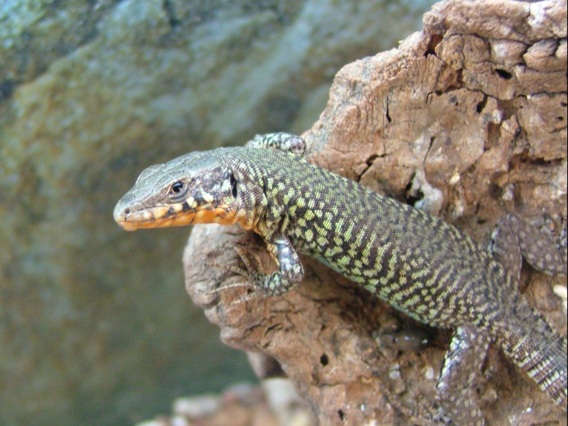The Selmunett lizard (Podarcis filfolensis ssp. Kieselbachi) is very likely extinct, according to Maltese naturalist Arnold Sciberras. One of four subspecies of the Maltese wall lizard, the Selmunett lizard was last seen in 2005. Although the lizard’s home—Selmunett Island—has long been uninhabited by people, that fact did not help save the lizard. Over-predation by introduced rats is thought to be the primary cause of lizard’s extinction.
A number of surveys have failed to turn up the lizard and its extinction published, yet the Malta Environment and Planning Authority (MEPA) still considers the subspecies as surviving, according to MaltaToday.
“MEPA doesn’t want to acknowledge that its conservation attempts have failed in some cases,” Sciberras told the local news organization.
The Selmunett lizard is a member of the wall lizard family, known as Lacertidae, which are present in Europe, Africa, and Asia. Other subspecies of the Maltese wall lizard survive on islands off of Malta and Italy.
A male Selmunett lizard. Photo by: Arnold Sciberras.

The Selmunett lizard. Photo by: Arnold Sciberras.

The Selmunett lizard. Photo by: Arnold Sciberras.
Related articles
Climate change devastating lizards worldwide: 20 percent estimated to face extinction

(05/13/2010) Lizards have evolved a variety of methods to escape predators: some will drop their tail if caught, many have coloring and patterning that blends in with their environment, a few have the ability to change their colors as their background changes, while a lot of them depend on bursts of speed to skitter away, but how does a lizard escape climate change? According to a new study in Science they don’t. The study finds that lizards are suffering local extinctions worldwide due exclusively to warmer temperatures. The researchers conclude that climate change could push 20 percent of the world’s lizards to extinction within 70 years.
Gold mining threatens world’s most infamous reptile, the Komodo dragon

(08/24/2009) A row has taken off in Indonesia over whether or not to allow gold mining near Komodo National Park, home to the infamous, venomous, and largest of all lizards, the Komodo dragon. Eight mines have currently been proposed, several have already begun exploratory work. Critics of the gold mines contend that the mining threatens the ecology of the park and the Komodo dragon, listed as Vulnerable by the IUCN.
Climate change could devastate lizards in the tropics

(03/04/2009) With help from data collected thirty years ago, scientists have discovered that tropical lizards may be particularly sensitive to a warming world. Researchers found that lizards in the tropics are more sensitive to higher temperatures than their relatives in cooler, yet more variable climates. “The least heat-tolerant lizards in the world are found at the lowest latitudes, in the tropical forests. I find that amazing,” said Raymond Huey, lead author of a paper appearing in the March 4 Proceedings of the Royal Society B.
